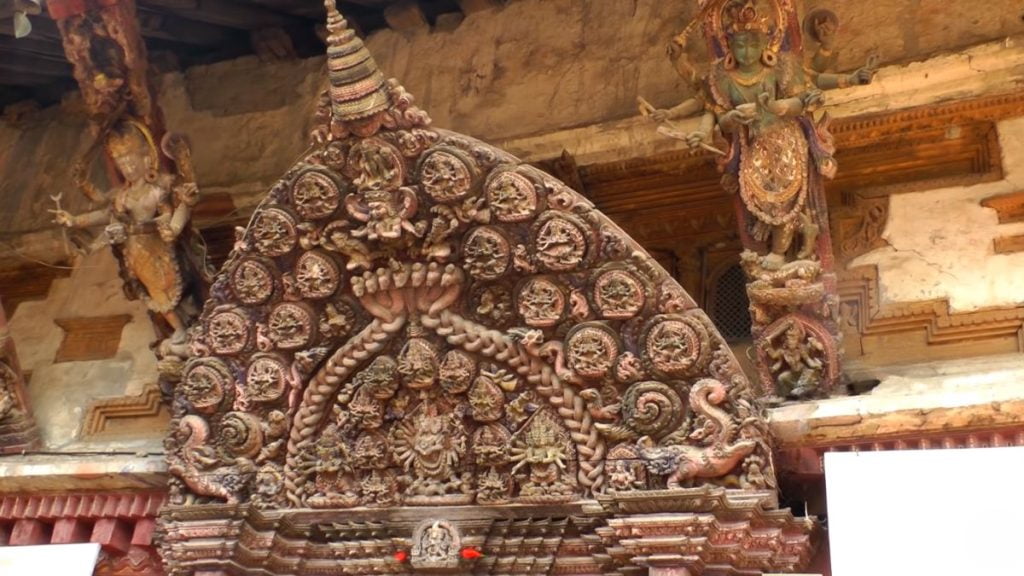Nepal is perhaps the world’s greatest treasury of Buddhist and Hindu art and architecture in Nepal is of a religious nature. More than 2,500 years of the Hindu and Buddhist faith have given Nepal an unrivaled collection of religious architecture and art, from the simple Buddhist stupas to the ornate Hindu pagoda temples.

Architecture in Nepal
The Indian Emperor Ashoka was on of the earliest known contributors to Nepal’s artistic heritage. Not only did he construct stupas in Patan and Lumbini, and numerous monasteries or gompas elsewhere, but he also established trade, cultural and religious ties between the two areas. Ashoka’s priests probably originally brought their own Indian artists (wood and stone cutters, carvers, architects and painters); eventually a professional artist class developed in Nepal with its own style.
The development of a wholly Nepali Form of artistic expression seems to have begun between the fourth and seventh centuries AD. Five centuries later, Tibetan influences began to appear in the native art forms: Tantric and Lamaistic themes filled with sinister and demoniac images such as Bhairav, the Destroyer of Evil.
Nepali architect Araniko
In the thirteenth century Chinese influences became apparent, but the admiration for each other’s art proved to be mutual. The Nepali architect Araniko was so venerated for his style that the mandarins of China invited him to Beijing to work for them.
The richest periods of Nepali expression were during the early Licchavi dynasty, between the fourth and ninth centuries, and in the Malla epoch, from the thirteenth to eighteenth centuries, and in the Malla epoch, from the thirteenth to eighteenth centuries. These royal houses were great patrons of the arts, as is the ruling house of Nepal.
Today Many of the art treasures from these periods were destroyed, not only in the recurrent earth quakes, but also by the Muslim marauder Shamsu-din-IIyas of Bengal, who swept with his armies through the valley in the fourteenth century, and desecrated virtually every temple and piece of religious art he could find in Patan, Kathmandu and Bhaktapur. But those that have survived are considered so priceless that in 1970 west Germany undertook to finance their renovation and preservation, and also to make an inventory of the major works, especially the temples.

It is said there are more temples in Kathmandu than houses, but the same seems to hold true outside the valley. And although much of this heritage from the Malla dynasty and that of other eras was destroyed in the great earthquakes of 1833, 1934 and 1988, an incomprehensible amount remains. Students of religion, art or architecture need many months to absorb the wonders of Nepal.

